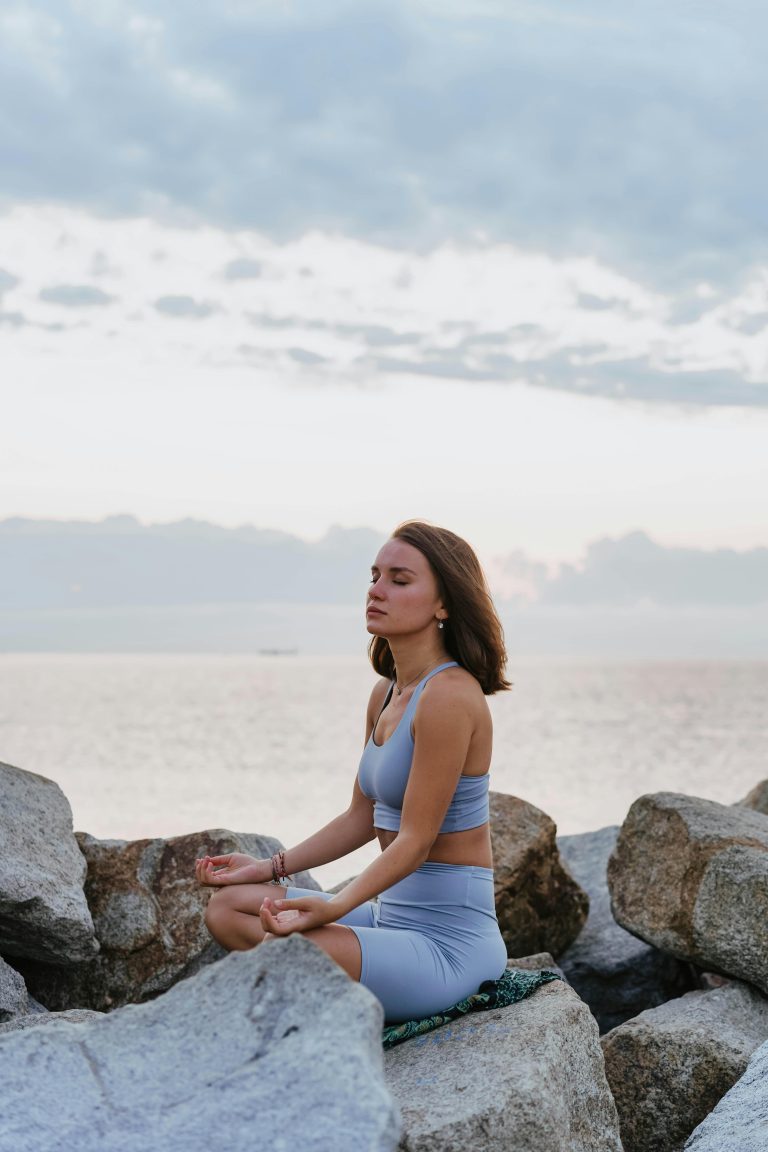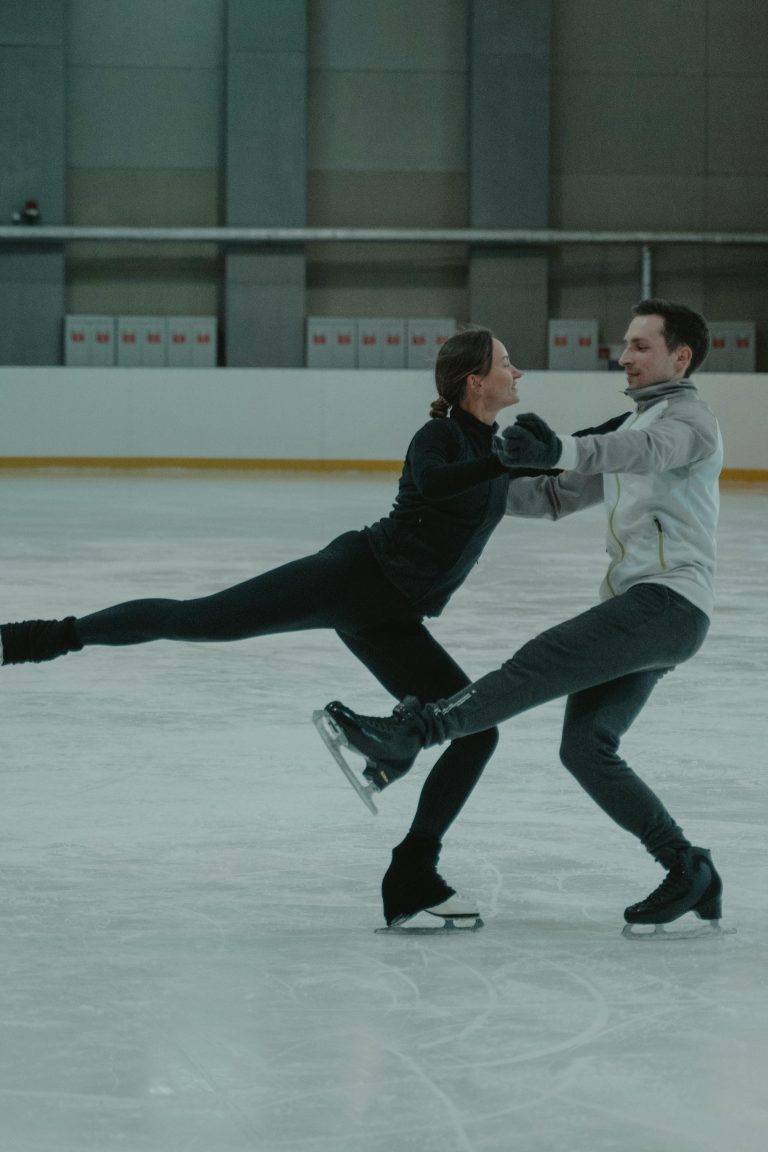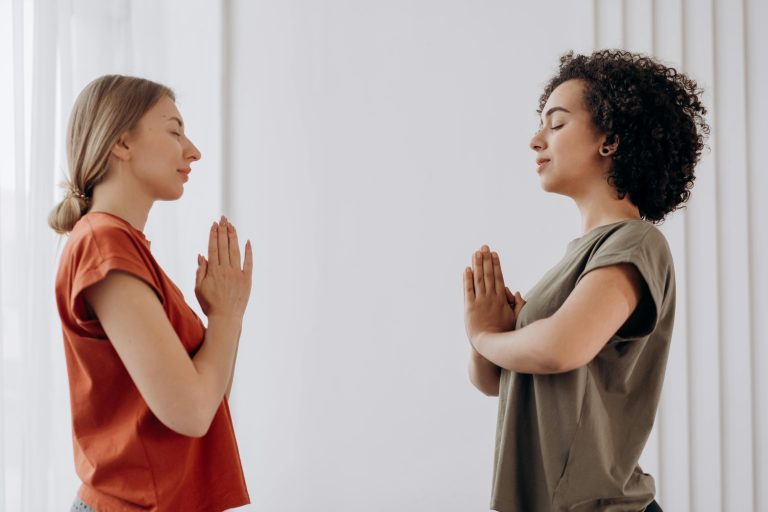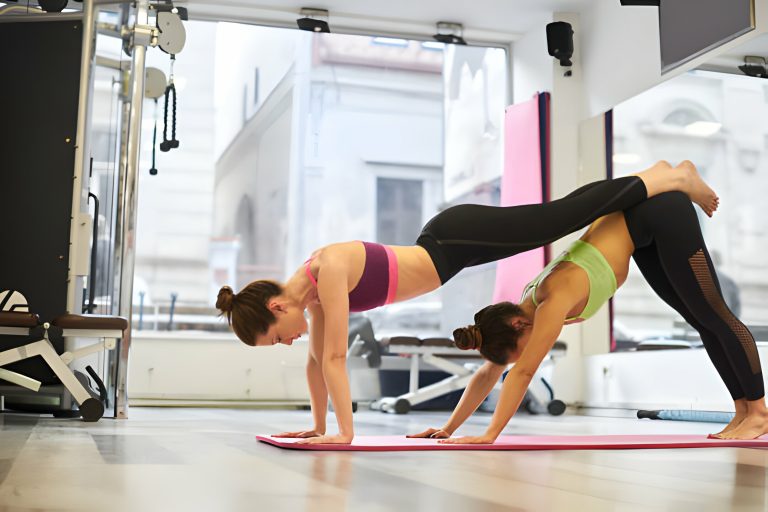Transformative Wall Yoga Poses for Deep Stretching and Balance
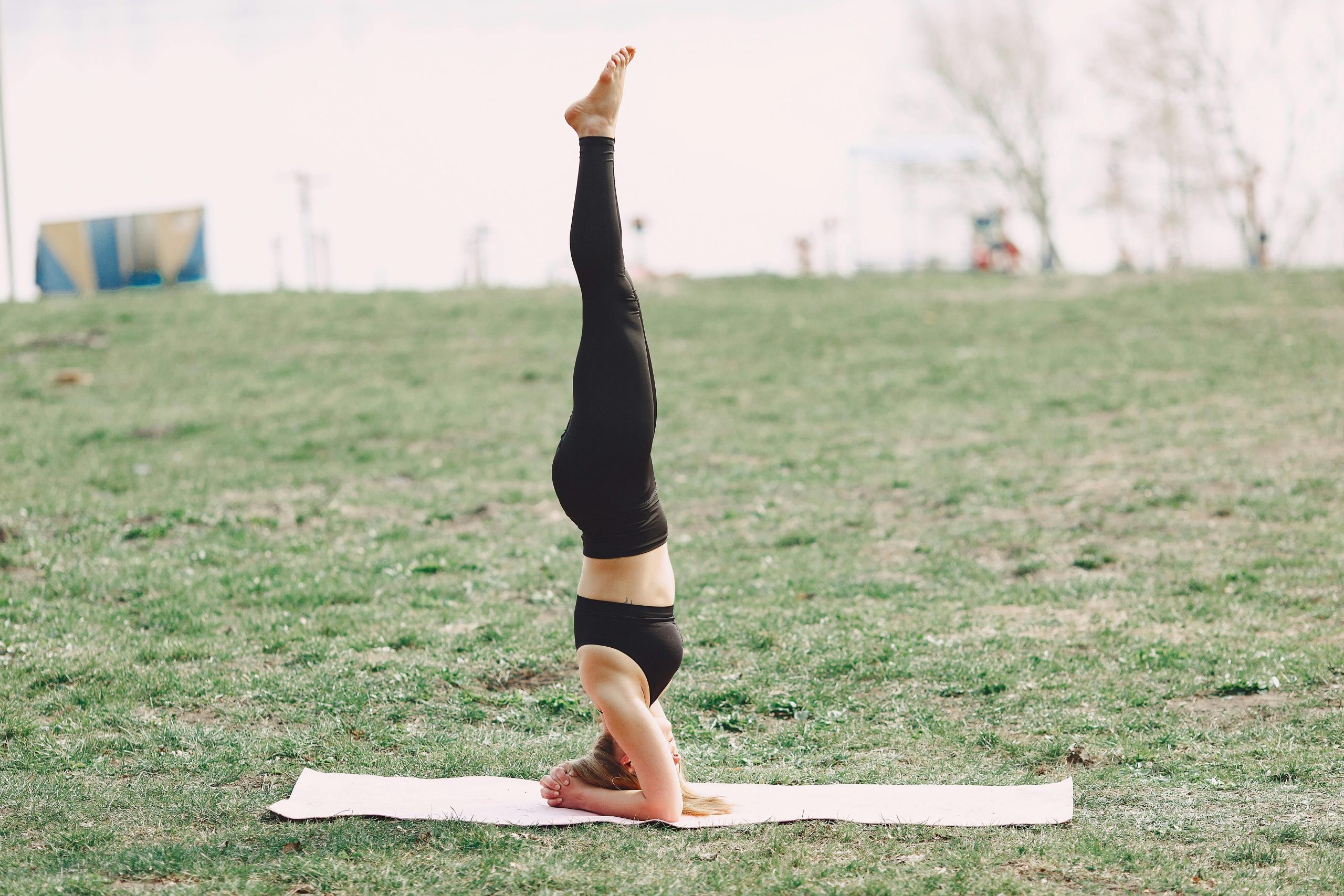
Wall yoga, a contemporary twist on traditional yoga practice, employs a flat, vertical surface as a tool to enhance and deepen the experience of various asanas. This unique approach to using the wall as a prop provides practitioners with feedback on their form, aids in support and alignment, and can significantly accentuate the sensation of stretching and balance.
In the realm of deep stretching, wall yoga poses offer an unparalleled avenue for accessing and elongating muscles that might otherwise remain under-addressed. Stretches performed with the assistance of a wall can lead to improved flexibility, posture, and mobility. For instance, the Extended Triangle Pose against a wall allows individuals to experience a deeper torso and leg stretch while maintaining proper alignment, thereby intensifying the benefits of the pose without compromising on form.
Balancing poses stand to gain immensely from the incorporation of a wall. Practitioners often find that the immediate feedback provided by a wall helps refine their body’s sense of positioning, thus avoiding the common pitfalls of misalignment and the risk of toppling over. The support of a wall brings a level of confidence and security to challenging postures like Half Moon Pose, which requires both balance and open hips. As practitioners engage with these poses, the wall acts as a silent teacher, guiding them toward a more in-depth practice.
For individuals looking to enrich their yoga practice with these transformative wall-assisted stretches and balance exercises, the subsequent discussion will delve into specific poses that exemplify this innovative approach. There will be a focus on detailed descriptions of the techniques, suitable variations for different skill levels, and tips to maximize the efficacy of each posture.
Incorporating wall yoga poses into one’s practice opens up a new dimension of exploring asanas, encouraging a blend of creativity and discipline. As this article progresses, readers can expect to acquire a practical understanding of how to enhance their stretching routines and elevate their capacity for balance and stability, whether they are seasoned yogis or newcomers to the discipline.
- Wall yoga poses are excellent for enhancing both deep stretching and balance, utilizing the wall as a stable support.
- Practicing yoga against a wall can help improve posture, align the body correctly, and increase focus on the breath.
- The support provided by the wall allows practitioners to hold poses longer, aiding in the development of strength and flexibility.
- Wall yoga can be beneficial for all levels of practitioners, from beginners to advanced, offering a way to deepen their practice.
- Inverted poses, such as Legs-Up-the-Wall (Viparita Karani), are more accessible when using a wall for support, aiding in circulation and relaxation.
- Standing poses like Triangle Pose (Trikonasana) and Warrior II (Virabhadrasana II) can be refined with wall assistance to better understand alignment and build stamina.
- Wall yoga assists in exploring new dimensions of balance in poses like Half Moon (Ardha Chandrasana), enhancing stability and focus.
- These poses promote the release of tension in tight muscles, which can be especially beneficial for individuals with sedentary lifestyles or desk jobs.
- For individuals recovering from injuries, using the wall as a prop can provide the necessary support to gently re-engage with yoga practice.
- Wall yoga poses are versatile and can be incorporated into a regular yoga routine to challenge and progress one’s practice.
What are the Most Effective Wall Yoga Poses for Deep Stretching and Balance?
Wall Yoga Poses are a subset of yoga asanas that incorporate a wall as a prop to enhance postural alignment, balance, and stretching intensity. Such poses are particularly beneficial for those looking to deepen their practice and are transformative in improving flexibility, strength, and overall body awareness. Deep Stretching refers to yoga stretches that involve prolonged holding of positions, targeting the connective tissues and enhancing flexibility. Balance, in the context of yoga, pertains to maintaining stability during various poses, which can be greatly aided by practicing against a wall. Overall, these terms reflect the essence of using walls in yoga to intensify the practice, allowing for transformative physical and mental benefits.
Practicing yoga with the aid of a wall can offer a supportive structure that helps yogis of every level to achieve better alignment and stability. Wall yoga poses are used to refine balance and posture, which can be especially beneficial for beginners or those dealing with injuries. Moreover, for advanced practitioners, the wall acts as a challenging partner to push the boundaries of flexibility and strength. Utilizing the wall enables practitioners to experiment with various positions they might not feel confident trying in the center of the room. It also helps to deepen stretches and enables a safe exploration of inverted positions, such as headstands and handstands, providing additional physical and mental benefits sourced from reversing the effects of gravity on the body. Through these strategic uses of the wall, individuals are able to unlock new dimensions in their yoga practice that contribute to improved body dynamics and equilibrium.
Enhancing Flexibility Through Alternative Stretching Techniques
Several methods have been developed to help individuals increase their flexibility without needing a wall or any yoga props. Dynamic stretching, for example, involves moving parts of your body and gradually increasing reach, speed of movement, or both. This type of stretching is particularly effective as a warm-up for athletes since it helps prepare the muscles for vigorous activity. Another technique is PNF stretching, or proprioceptive neuromuscular facilitation, which combines passive stretching and isometric stretching to achieve maximum static flexibility. A partner typically assists in PNF stretching by providing resistance against the active muscle contraction before the passive stretch. These methods have been shown to significantly improve flexibility and range of motion.
Balance Enhancement Exercises Outside of Yoga
Beyond yoga, there are numerous exercises aimed at developing balance and core strength. One such exercise is the single-leg deadlift, which targets stability muscles in the legs and core while also engaging the glutes and hamstrings. To perform, one must stand on a single leg while tipping forward at the hips, extending the free leg behind for balance. This action not only works on balance but also promotes strength and proprioception. Balance boards and stability balls offer other means to practice maintaining equilibrium in a dynamic way, forcing the practitioner to constantly adjust their center of gravity to remain upright and steady. Regular use of these tools can lead to improved coordination and overall athletic performance.
Building Strength with Bodyweight Exercise Routines
For those looking to enhance strength without the use of weights, bodyweight exercises can be equally effective. Push-ups, for instance, are a classic bodyweight exercise that strengthens the chest, shoulders, triceps, and core muscles. They can be modified to increase or decrease difficulty, and to target different muscle groups, such as using an elevated surface to place the hands or feet, thereby changing the angle of the exercise. Similarly, squats and lunges work the lower body and can be performed with numerous variations, including split squats, jump squats, and walking lunges. Incorporating these exercises into a regular routine ensures a full-body workout that requires no equipment, making it accessible for many people.
Integrating Mindfulness and Meditation Practices
Although not a physical exercise, mindfulness and meditation offer complementary benefits to physical health regimes. By practicing focused breathing or attending mindfulness meditation sessions, individuals can reduce stress levels, enhance mental clarity, and improve emotional resilience. Meditation can be done seated, laying down, or even while walking, offering a versatile practice that can be tailored to fit into any lifestyle. Mindfulness exercises, such as body scans or mindful eating, encourage a heightened state of awareness and presence throughout daily activities. These practices have been associated with a decrease in symptoms associated with anxiety, depression, and chronic pain, contributing to an overall sense of wellbeing and balance in life.
What are the benefits of practicing wall yoga poses for stretching and balance?
Practicing wall yoga poses enhances both flexibility and balance by providing a stable surface to lean or press against, which can help deepen stretches and hold poses for longer periods. The support from the wall allows for a safe environment to explore poses that might otherwise be challenging, reducing the risk of injury and building confidence in one’s practice.
Additionally, wall yoga can improve body awareness and alignment. By using the wall, one can feel how their body should be positioned in space, promoting better posture and technique both on and off the mat. The proprioceptive feedback from the wall can guide practitioners toward more precise movements and positioning within poses.
Can wall yoga poses help with my flexibility if I am a beginner?
Yes, wall yoga poses are excellent for beginners looking to improve their flexibility. The wall acts as a supportive prop, allowing you to explore your range of motion in a controlled and safe way. It encourages gradual progression into deeper stretches, without the added pressure of balancing without support.
Beginners can especially benefit from wall yoga as it helps develop an understanding of proper alignment, which is essential for preventing injuries and maximizing the effectiveness of each stretch. By following a structured routine of wall yoga poses, beginners can see noticeable improvements in flexibility over time.
How does wall yoga improve balance?
Wall yoga enhances balance by offering a point of contact that you can use to steady yourself while engaging in various poses. This additional support enables practitioners to focus on the engagement of muscles required for balance, without the added difficulty of maintaining stability. Over time, this practice helps train the body’s balance systems, including proprioception and the vestibular system.
As practitioners become more experienced, they may rely less on the wall, using it only as a light touchpoint or guide. This gradual shift encourages the natural improvement of balance skills, fostering an increased ability to execute poses independently and with confidence.
What types of poses can I do using a wall for yoga?
There is a wide variety of poses that can be performed with the assistance of a wall, ranging from simple stretches to more complex balance and strength-oriented poses. Some examples include Wall Downward Dog for stretching the hamstrings, Wall Plank for core strengthening, Wall Tree Pose for balance, and Wall Triangle Pose for lateral stretching.
Other poses such as Legs-Up-The-Wall are excellent for relaxation and improving circulation, while inversions like Supported Headstand can be practiced with the wall providing a safety net for those who are still building core and upper body strength.
Are there any precautions I should take when practicing wall yoga?
When practicing wall yoga, it is important to approach each pose with care, especially if you are a beginner or if you have any existing health issues or injuries. Always listen to your body and avoid pushing into pain or extreme discomfort. It’s advisable to warm up before engaging in deep stretches or more intense poses to prevent muscle strains.
Make sure that the area around the wall is clear of obstacles to prevent injuries, and use a yoga mat or other non-slip surface for added safety. If you have any specific health concerns, consult with a healthcare professional or a qualified yoga instructor before incorporating wall yoga poses into your routine.
Can wall yoga help with back pain?
Wall yoga can be beneficial for those suffering from back pain as it offers gentle, supportive stretches that can help relieve tension and strengthen muscles that support the spine. Poses like Wall Child’s Pose and Gentle Wall Backbends can be particularly effective in stretching and decompressing the spine, thereby alleviating discomfort.
However, it is crucial to approach wall yoga mindfully, especially if back pain is a concern. It’s recommended to consult with a healthcare provider or a yoga therapist to tailor a sequence that is appropriate for your specific back issues. Additionally, focusing on maintaining proper alignment and avoiding overstretching are key to preventing further injury.
How often should I practice yoga poses at the wall to improve my balance and flexibility?
The frequency of your practice will depend on your individual goals, schedule, and level of experience. For those aiming to significantly improve balance and flexibility, practicing wall yoga poses 3-4 times a week can be an effective regimen. Consistency is key in seeing progress in any yoga practice.
Over time, as you become more familiar with the poses and their effects on your body, you can adjust the frequency and intensity to match your personal development. It’s also important to allow ample time for recovery, particularly after sessions that involve intense stretching or strength-building poses.
What kind of wall space is needed for practicing transformative wall yoga poses?
Ideally, you should have a clear, unobstructed wall space to practice yoga safely and effectively. The amount of space required can vary depending on the pose, but generally, a section of wall that is as wide as your arms can spread and as tall as your body is sufficient for most poses.
The wall surface should be smooth and free from any fixtures or sharp edges that could cause injury or hinder your movement. For added comfort, especially when your body or limbs are in direct contact with the wall, consider using a yoga mat, towel, or blanket. This also helps prevent slipping.
Are there any specific breathing techniques to combine with wall yoga stretches?
Breathing techniques are an essential part of any yoga practice, including wall yoga. Engaging in deep, controlled breathing can enhance the effectiveness of the stretches and aid in balance. For instance, using Ujjayi breath, which is a slow, rhythmic breath through the nose while constricting the back of the throat, can help maintain focus and stability during wall yoga poses.
Coordinating breath with movement is also helpful; inhaling as you extend or open the body, and exhaling as you fold or twist can deepen the stretch and promote relaxation within the pose. Becoming aware of and integrating these breathing techniques can significantly improve the overall yoga experience.
Can I perform wall yoga poses during pregnancy?
Many wall yoga poses are safe and beneficial during pregnancy, as they can help alleviate discomfort, maintain flexibility, and build strength. However, it is important to exercise caution and perhaps modify certain poses to accommodate the changing body. Pregnant practitioners should avoid any poses that place pressure on the abdomen or involve lying flat on the back, especially after the first trimester.
It’s highly recommended that pregnant women consult with a healthcare provider before starting or continuing a yoga practice and consider working with a yoga instructor experienced in prenatal yoga. Prenatal yoga classes often include wall yoga poses that are specifically adapted for pregnancy, ensuring safety and comfort for both mother and baby.
Final Thoughts
Transformative wall yoga poses offer a unique blend of support and resistance critical for deep stretching and balance. These poses, employed correctly, not only enhance flexibility but also strengthen the body’s core muscles. L-shaped handstands against the wall can revolutionize one’s approach to inversions, providing a safe way to build upper body strength. The wall serves as a stabilizer in poses like the Half Moon, allowing for more opening and extension without compromising alignment.
Legs Up the Wall is perhaps the epitome of restorative wall yoga poses, offering both deep relaxation and the benefits of inversion without strain. For those working on hip flexibility, Pigeon Pose against the wall allows for a more controlled and deeper stretch, targeting the hip flexors and rotators effectively.
Wall yoga poses have also been shown to improve balance by enabling practitioners to experience correct posture and alignment with the support of the wall, serving as both a guide and a spotter. The wall acts as a tactile feedback mechanism, which is especially beneficial in poses like Tree Pose or Warrior III, helping one refine their sense of equilibrium.
By integrating wall yoga poses into a regular yoga routine, practitioners can deepen their practice, create space within the body, and unlock new levels of flexibility and stability. The wall is more than a prop; it becomes a trusted partner in the journey towards a more balanced and connected yoga practice.

